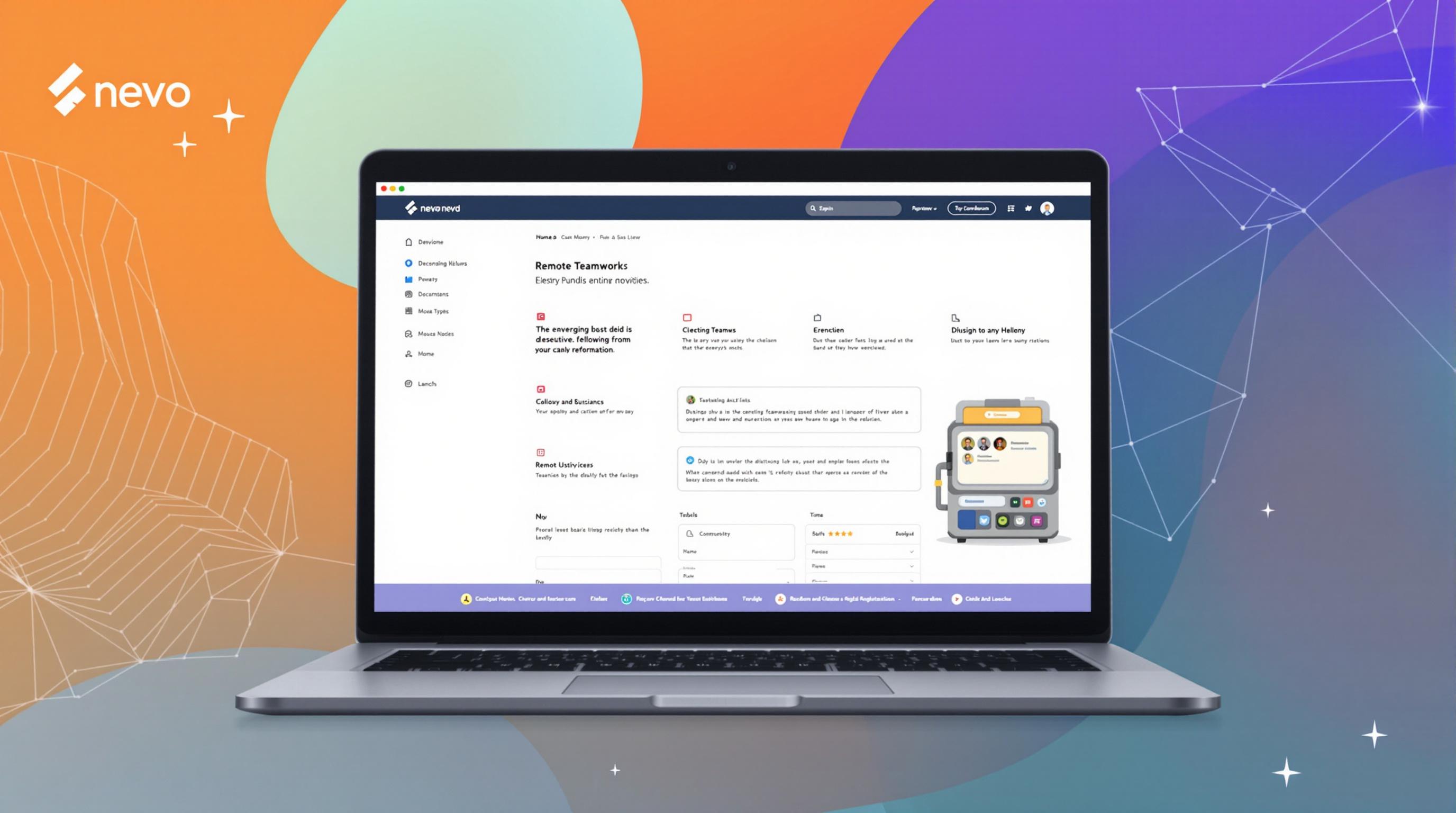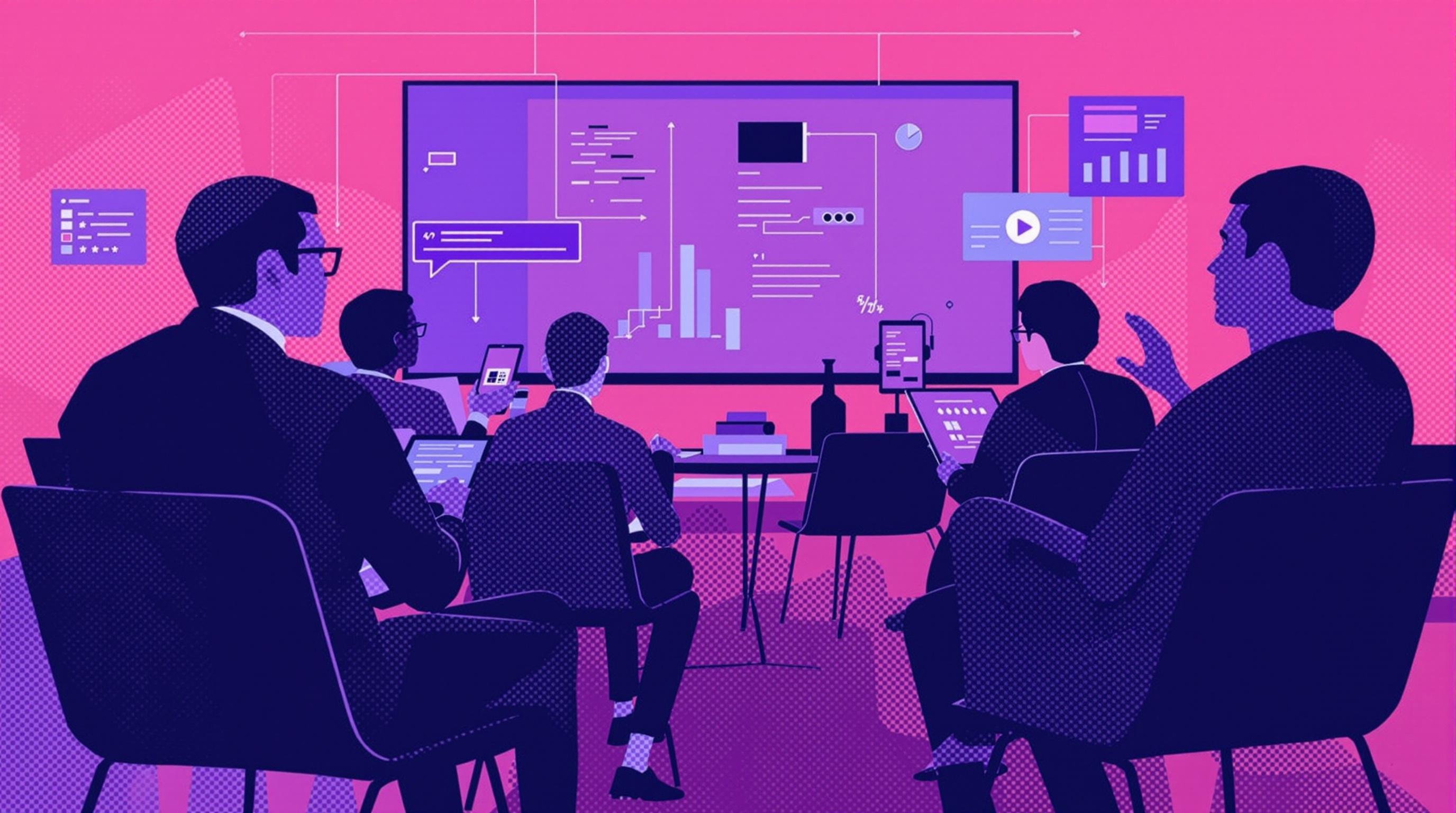Related Articles
- Top 8 Trailblazing Low-Code Platforms from the Past Five Years Revolutionizing App Development Efficiency
- Top 6 SaaS UX Innovations Since 2019 That Outsmart Legacy Giants in User Workflow Mastery
- How Forgotten Protocols in Legacy Systems Challenge Modern Digital Authentication Practices
- Unveiling the Role of Corporate Storytelling in Shaping Employee Adherence to Ethics and Compliance Standards
- 5 Next-Gen Digital Collaboration Apps from 2019-2024 That Transform How Teams Connect and Create
- The Unexpected Environmental Impact of Subscription Models: How Recurring Payments Influence Sustainable Consumer Choices
Top 8 Emerging Platforms Revolutionizing Remote Teamwork: In-Depth Reviews of 2020-2024 Launches
Top 8 Emerging Platforms Revolutionizing Remote Teamwork: In-Depth Reviews of 2020-2024 Launches
Top 8 Emerging Platforms Revolutionizing Remote Teamwork: In-Depth Reviews of 2020-2024 Launches
Introduction
The global shift towards remote work between 2020 and 2024 has catalyzed innovative platforms designed to optimize collaboration beyond traditional office spaces. These emerging technologies focus on improving communication, project management, and team cohesion despite physical distances. This article explores eight standout platforms launched during this period, evaluating their unique features and impact on remote teamwork.
As remote work became mainstream, organizations demanded tools that could seamlessly integrate various workflows, enhance productivity, and foster creativity in virtual environments. Platforms that combine intuitive user interfaces with powerful capabilities have become essential in maintaining robust team dynamics.
Drawing from industry reports and user feedback, this review covers fresh innovations that are shaping the future of teamwork, helping companies navigate the evolving digital workspace with greater efficiency and cultural sensitivity.
1. Tandem: Virtual Office Collaboration
Launched in early 2020, Tandem has been described as a “virtual office” where teams can spontaneously drop into audio or video conversations. Unlike traditional meeting schedulers, Tandem mimics the organic interactions of physical workplaces, helping remote teams maintain informal communication lines that often spark creativity.
The platform supports seamless integration with popular tools like Slack, Google Workspace, and Asana, making it adaptable to various workflows. Its ability to show who's available in real-time encourages a natural flow of team engagement, reducing the communication lags typical of remote work.
Industry experts note that Tandem’s emphasis on “presence” helps address collaboration fatigue by promoting spontaneous, context-driven chats instead of formal, scheduled meetings, a common pain point during the pandemic-driven shift to remote work (Forbes, 2021).
2. Miro: Interactive Whiteboard for Creativity
Miro, although initially launched prior to 2020, saw significant development and adoption as a core remote collaboration tool between 2020 and 2024. Its interactive whiteboarding platform facilitates brainstorming, diagramming, and agile workflows, enabling teams to visually organize ideas and data in real-time.
The platform’s flexibility supports a wide range of disciplines, from design sprints to engineering planning, making it a versatile choice for creative and technical teams alike. Its ease of use helps flatten the learning curve, encouraging more inclusive participation during ideation sessions.
Recent updates introduced AI-powered templates and video chat integrations, further amplifying its role as a central hub for remote creativity and problem-solving, as documented in G2 Crowd reports (2023).
3. Loom: Asynchronous Video Communication
Loom revolutionized asynchronous communication by allowing users to record quick, shareable videos of their screen and voice. This approach reduces the need for synchronous meetings and enables flexible response times, which is ideal for distributed teams across multiple time zones.
The simplicity of Loom’s interface supports a natural storytelling format for progress updates, training, and feedback. Its instant sharing capabilities ensure smooth information flow without overwhelming inboxes.
Research shows teams using video-based asynchronous messaging report higher engagement and clearer communication, positioning Loom as a pivotal tool in remote work arsenals (Harvard Business Review, 2022).
4. ClickUp: All-in-One Project Management
ClickUp emerged as a robust project management platform that integrates tasks, docs, goals, and chat into one app. Between 2020 and 2024, it expanded its features to support remote work complexities, such as multiple workflows, customizable views, and automation.
This consolidation reduces tool switching and streamlines work processes, which is critical when team members operate remotely. ClickUp also supports detailed time tracking and reporting, aiding managers in maintaining transparency and accountability.
Users praise ClickUp’s adaptability across different industries and company sizes, noting its role in unifying distributed teams and enhancing productivity (TechRadar, 2024).
5. Around: Video Meetings with Minimal Fatigue
Around is a platform designed to reduce video meeting fatigue through a minimalist interface and innovative features like avatar-based presence and smart speaker detection. Launched in late 2020, it addresses common pain points in virtual meetings by focusing on user comfort and engagement.
Its small video bubbles allow participants to engage in other tasks simultaneously without losing attention, striking a balance between visibility and distraction. The platform also includes integrations with calendar apps and productivity tools.
Studies on remote work wellbeing cite Around’s design as a meaningful advancement toward sustainable video communication practices (MIT Sloan Management Review, 2023).
6. Notion: Fluid Workspace and Knowledge Management
Notion, during the 2020-2024 span, solidified its position as a flexible workspace combining notes, databases, and collaboration tools. Its customizable pages enable teams to create tailored workflows that suit diverse project requirements.
Remote teams leverage Notion for knowledge management, project tracking, and documentation, creating a centralized hub that fosters transparency and continuous learning. Its user-friendly interface allows both technical and non-technical users to participate equally in content creation.
As remote work matured, Notion’s integration with other digital tools and ongoing enhancements made it a preferred organizational backbone in many distributed companies (PCMag, 2022).
7. Sococo: Virtual Office Spaces with Spatial Audio
Sococo offers a virtual office environment that uses spatial audio to mimic natural conversations. Launched prominently during this timeframe, it provides teams with a floorplan-style interface where members appear in rooms, emulating office layouts.
This spatial design improves collaboration by allowing users to join rooms for focused discussions or leave for solitude, echoing the flexibility of physical spaces. It supports video, voice, and text, promoting diverse modes of communication.
Research from remote work studies highlights Sococo's effectiveness in combating isolation and fostering team cohesion, crucial elements for long-term distributed work success (Remote Work Association, 2023).
8. Remotion: Developer-Focused Remote Collaboration
Remotion is tailored to software development teams, enabling real-time collaborative coding and debugging in a virtual workspace. Emerging in 2023, it addresses the challenge of replicating pair programming and agile practices remotely.
Its environment supports live code sharing, voice chat, and integrated task boards, enhancing transparency and speed in development cycles. By focusing specifically on coders, Remotion fills a niche often underserved by general collaboration platforms.
Industry analysts recognize Remotion as a niche leader fostering productivity and camaraderie within distributed engineering teams, reflecting evolving practices in tech collaboration (Stack Overflow Insights, 2024).
Conclusion
The period from 2020 to 2024 has seen a surge in platforms that uniquely tackle the challenges of remote teamwork. From spontaneous audio drop-ins to sophisticated project management hubs, these eight emerging platforms exemplify how technology can recreate and enhance the intangible benefits of in-person collaboration.
Each platform offers distinct innovations tailored to varied aspects of remote work—from communication and creativity to wellbeing and productivity. Their development marks a transformative era where remote teams can not only survive but thrive in a digitally connected world.
As companies continue adapting to hybrid and fully remote models, investing in such versatile tools is key to fostering a dynamic, inclusive, and effective workforce away from the traditional office setting.





